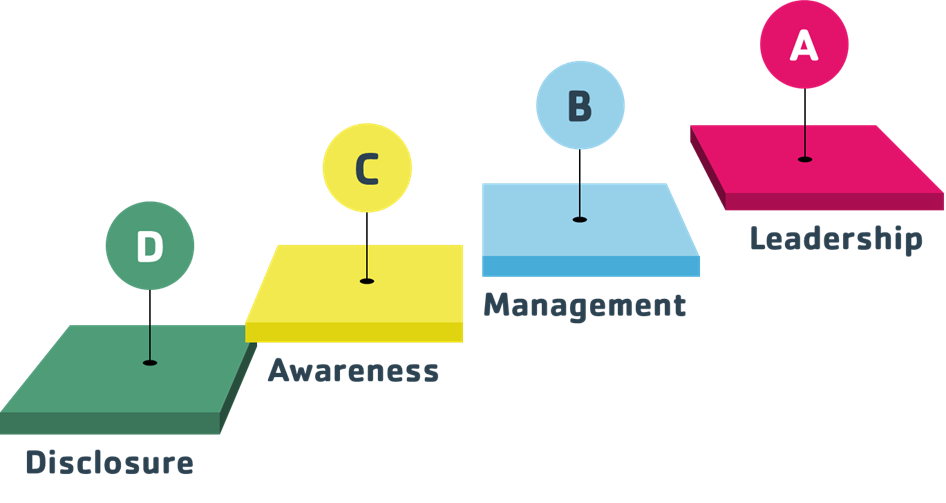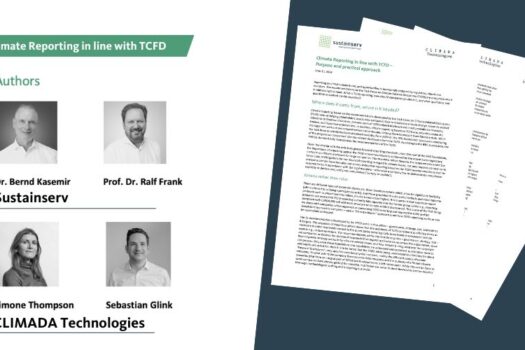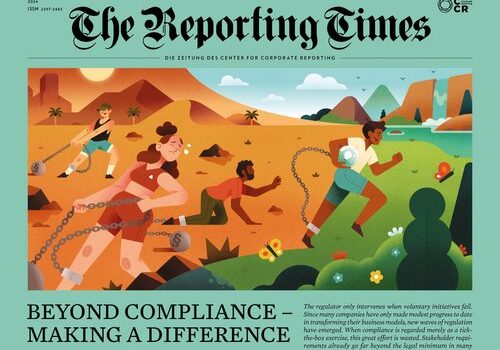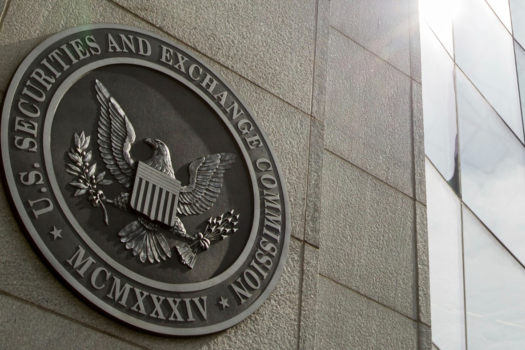
CDP, formerly known as the Carbon Disclosure Project, is an international nonprofit that provides a platform for companies to disclose, measure and manage their environmental data. CDP works with investors, companies, cities, governments, and policymakers to drive transparency and action on environmental impacts. Their primary tools for this process are three annual questionnaires: climate change, water security, and forests.
The climate change questionnaire represents the majority of CDP submissions. While the questionnaire is sophisticated and requires effort, companies can realize an array of benefits by filling it out every year.
Why should companies participate?
As stakeholder demand for climate change related corporate data continues to increase, receiving a high score from CDP is a key asset signaling corporate climate leadership and a clear commitment to mitigating climate change. Responding to a CDP questionnaire is an essential step toward transparency and accountability.
On the risk management side, the process of answering a CDP questionnaire helps companies thoroughly understand their climate change vulnerabilities and build more resilient business models and supply chains. And as an objective evaluation from a reputable, 21-year-old organization, a CDP score establishes a valuable benchmark that companies can use for goal setting and competitive analysis.
A growing number of investors, buyers and companies are turning to CDP for help in communicating quality climate disclosure data. In 2020:
- More than 590 investors with over US$110 trillion in assets requested companies disclose through CDP on climate change, water security and forests.
- 200+ major buyers, with a combined purchasing power of US$5.5 trillion asked their suppliers to disclose through CDP.
- Over 2,400 European companies and 2,500 North American companies reported through CDP on climate change, water security and forests, part of over 9,600 globally
How does CDP’s scoring methodology work?
One of the more complex aspects of CDP is the scoring methodology. Scoring is expressed in four levels: disclosure (D), awareness (C), management (B), and leadership (A). Questions in the questionnaire can be associated with points on just one, several, or all scoring levels. In the end, a company receives one overall grade, ranging from D- to A.

The scoring builds on itself so that companies can achieve top scores only if they score well on foundational aspects of the questionnaire. Companies cannot make up for a poor performance on Disclosure and Awareness levels with a strong performance in Management and Leadership levels, since higher-level points are scored by CDP only if 79% of lower-level points have been achieved. The total number of points achievable on each level depends on question pathways, which depend on how a company responds to a question and the sector a company is in.
To make matters even a little more complicated, for points awarded on the Management and Leadership levels, CDP has a weighting process whereby certain scoring categories (of which there are 16) are weighted more heavily than others. In addition, the weighing scheme differs for some sectors.
One of our seven tips for CDP reporting is to never skip a question. We always advise clients to answer every question to the best of their ability, even if the answer is “we don’t know because…” Acknowledging that the company doesn’t have strong programs or data yields more points than failing to respond, in which the score will most assuredly be zero and potentially block the company from moving up to the next scoring level.
To keep the questionnaire relevant and aligned with evolving disclosure standards, CDP typically makes annual updates to the questionnaire.
Tips
- Don’t leave questions unanswered
- Quantify, quantify, quantify
- Take a stab at Scope 3
- Set reduction goals – best set science-based-targets (SBTs)
- Have your data verified
- Focus on the tougher parts of the questionnaire
- Involve your non-sustainability coworkers
What to focus on in the climate change questionnaire?
Companies should aim to do well on all questions, but especially on those of the Disclosure and Awareness levels. The following aspects are among the ones that get you the most points:
Data
A company’s greenhouse gas inventory is the foundation of the CDP Climate Change questionnaire. To score maximum points, the inventory must be detailed and broken out by different aspects, for instance by country. Scope 1 and 2 are not enough. To do well, companies need to have at least estimations for their Scope 3 emissions or explain why certain categories are considered irrelevant or data have not been obtained yet. To achieve points on the Management and Leadership levels, emissions need to be externally verified.
Targets
Target-setting has become a widespread expectation for companies that take climate change seriously. As such, “Targets” is one of the most heavily weighted scoring categories, and targets that are aligned with science, such as science-based targets or net zero targets, score the most points.
The structure of these questions is aligned with TCFD Metrics & Targets.
Governance and Business Strategy
CDP is interested in how involved a company’s board and management are in climate decisions and if companies have integrated climate-related issues into their business strategy, including scenario analysis and transition planning. Board-level oversight of climate change strategy is considered best practice.
Risks and Opportunities
Being aware of and managing climate risk has become part of state-of-the-art business risk management. Significant points are awarded for disclosing approaches for identifying, assessing, and responding to climate-related issues and climate-related risks and opportunities identified by the responding organization.
Other important aspects include Financial Planning, Carbon Pricing, Communications, Emissions Reduction Initiatives, and Low Carbon Products, Energy, Public Policy Engagement, and Value Chain Engagement.
The path is winding
Companies that commit to annual CDP disclosure are reaping benefits such as satisfying stakeholders for whom climate change has become a factor in decision making. This includes investors and others who directly impact a company’s ability to grow and thrive.
The modules, scoring categories, and weighting schemes make for a complex process, especially the first time. Success depends not only on the company’s programs, policies and performance, but also having the know-how and expertise to navigate through the twists and turns of the questionnaire to maximize points. Sustainserv’s years of experience responding to the CDP climate change questionnaire for clients from various industries can help you achieve higher scores than if you go it alone.
Get in touch. We are happy to tell you more about it.







